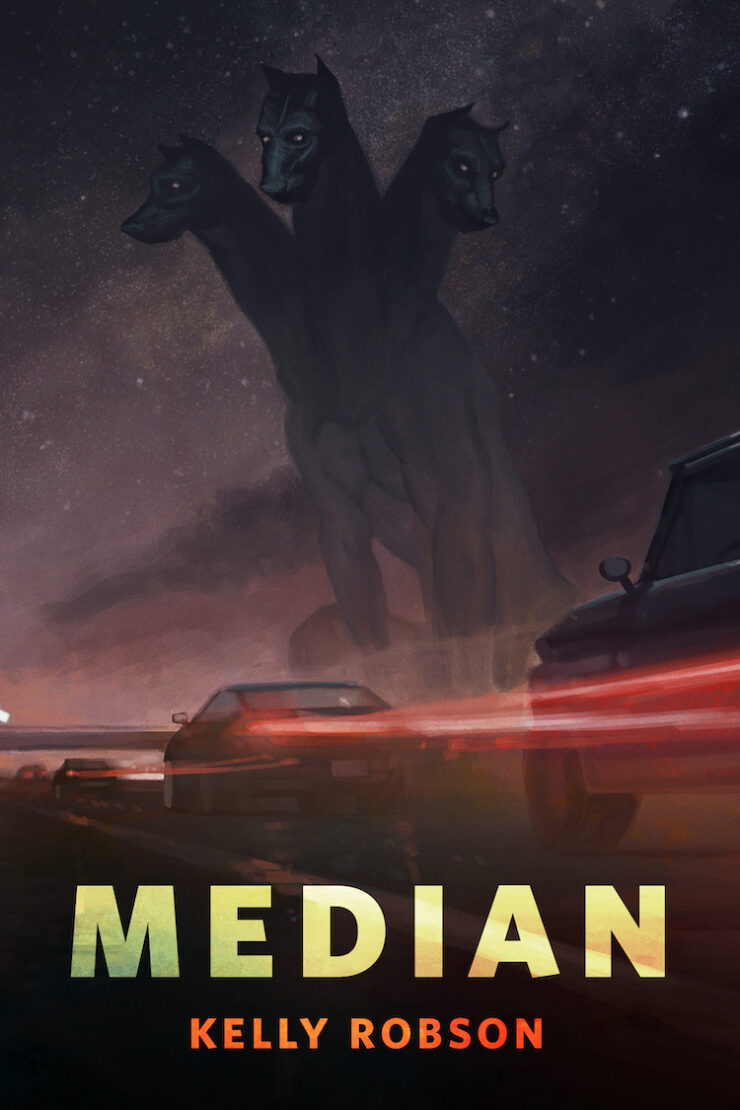Solaris (1972) Directed by Andrei Tarkovsky. Starring Donatas Banionis, Natalya Bondarchuk, and Jüri Järvet. Screenplay by Friedrich Gorenstein and Andrei Tarkovsky based on the novel by Stanislaw Lem.
When Stanley Kubrick’s 2001: A Space Odyssey came out in 1968, it made a huge splash in the movie world. Some people loved it so much they declared it the end-all-be-all of science fiction filmmaking; some people hated it so much they dismissed it as a boorish waste of time. Just about everybody with even a passing interest in cinema or science fiction had something to say about the film, and they keep saying it now, decades later.
We are not talking about 2001 this week; we’ll get to that one in the future. But I want to mention it briefly, because the reaction to 2001 is such a significant part of the legacy of Solaris that it’s impossible to ignore. The two films are often set in direct contrast to each other, a cinematic rivalry first driven by the politics of the Cold War and still going strong more than fifty years later. I’m not terribly interested in any perceived competition or any manner of compare-and-contrast, but I am interested in the way pieces of art influence and inform each other. Science fiction, as a genre, is often in conversation with itself, and so too are films as a medium.
Among 2001’s critics was Soviet filmmaker Andrei Tarkovsky, who disliked what he viewed as a phoniness, a sterility, a cold and off-putting technological obsession in 2001. A 1970 interview in which he describes this reaction is very interesting, because much of his reaction seems to be about the fact that he simply thinks about storytelling, filmmaking, and the themes that fascinate him very differently from Kubrick. The dislike was not mutual; Kubrick was reportedly fond of Solaris and Tarkovsky’s work.
There is another layer to this conversation, and that’s the fact that Stanislaw Lem, the Polish author who wrote the 1961 novel Solaris, did not like Tarkovsky’s movie at all—although it’s not entirely clear if he ever watched the entire film, or if he never fully viewed it because he was so annoyed with the screenplay and the argument he had with Tarkovsky about it. Most sources indicate that it was the screenwriter Friedrich Gorenstein who wrote the parts of the movie that stray most significantly from Lem’s novel, including the lengthy opening on Earth, but Lem always focused his ire on Tarkovsky. (Lem also criticized Steven Soderbergh’s 2002 Solaris without watching it; his opinion was based only on reviews.) And, once again, the dislike was not mutual; Tarkovsky spoke very highly of Lem’s novels.
Some of Lem’s objections to Tarkovsky’s film do seem to be borne of a stubborn, almost petty, refusal to acknowledge that any change to the story would be necessary. But that’s not all there is to it. It seems that, similar to Tarkovsky’s response to Kubrick, they were simply, fundamentally interested in very different stories. Lem famously declared that Tarkovsky didn’t make Solaris; he made Crime and Punishment. Later critics take it even further, such as Philip Lopate, writing for the Criterion Collection, who suggests Solaris is more akin to Hitchcock’s Vertigo, in that it’s focused on a sad man’s guilt about a beautiful dead woman, a very common theme in cinema across many genres. I can see the point about the sad man and the beautiful dead woman—it’s one of my least favorite tropes in any fiction—but I am very wary of any comparison, regardless of who it comes from, that tries to take the science fiction out of Solaris when searching for its “real” meaning.
It is true that Solaris the book and Solaris the movie do explore different themes and ideas, even while following the same characters and plot. That’s one small part of what makes the film so interesting to me. The much larger part is the fact that it’s a stunning movie, regardless of what inspired it. It’s weird, moody, ponderous, melancholy, and tense, full of disconcertingly long scenes and oddly disjointed conversations, with characters who feel unreal in one moment and achingly human in the next. It’s both alluring and frustrating. I love that about it.
The film opens on Earth, where we meet Dr. Kris Kelvin (Donatas Banionis, fittingly broody) at his family’s home on Earth: wooden farmhouse, running water, saturated greens, sudden rainstorms. The pastoral quiet of this setting is interrupted by the arrival of a man named Burton, who comes on the eve of Kelvin’s departure for space to share a report of his own strange experience on the planet Solaris. We learn that people have been studying Solaris for many years, attempting to understand what is theorized to be a sentient ocean that covers the entire planet. Kelvin’s task is to determine if the research should continue or if the project should be abandoned.
Kelvin travels to Solaris to meet the three scientists remaining on the dingy, dilapidated station. He learns that one of them has died by suicide, and the other two behave in suspicious and off-putting ways, including apparently hiding the presence of other people aboard the station. Kelvin makes some half-hearted attempts to find out what’s going on, but all of that stops when he wakes up the next morning to find that his dead wife has shown up.
His wife, Hari, died by suicide ten years ago. This new Hari (Natalya Bondarchuk, truly fantastic in an intense and challenging role) is a construct created from Kelvin’s memories and dreams of her. She doesn’t know this, exactly, but she does know something is very wrong with her existence. Kelvin panics and kills her (by launching her into space), but she appears again the next day.
This is what the sentient ocean of Solaris does: it plucks memories from the subconscious minds of the humans in orbit and creates living beings out of them. The two surviving scientists on the station, Drs. Snaut (Jüri Järvet) and Sartorius (Anatoliy Solonitsyn), have figured this out already, but they didn’t explain it to Kelvin when he arrived. He, in turn, demonstrates almost no curiosity about the planet, the research, the attempts to communicate with the sentient ocean, any of it. So many obvious questions go deliberately unasked, as though the events and their explanations are too heavy for the characters to handle.
Tarkovsky was open about the fact that he had little interest in the shiny technological trappings of science fiction; that’s where much of his dislike of 2001 came from. One of Solaris’s few concessions toward a “futuristic” look is the a long, lingering, drawn-out scene that follows Burton’s ordinary mid-century car along the Shuto Expressway near Tokyo, which was specifically chosen because it was thought to have a futuristic look at the time. But even that is, quite literally, grounded: it’s just a car on a highway, a man and a child, a city at twilight.
There is similar purposeful neglect to other science fictional elements in the film. After the long, lingering highway scene, Kelvin’s journey through space is dispatched in a matter of seconds, with no details about how it happens, how long it takes, or what effects it has. The station itself is in a depressing state of disarray, with damaged equipment and exposed wires everywhere, signs of long neglect and disregard. All we see of the planet itself is the whirling ocean; I don’t know how it was filmed, but it sure looks like footage of frothy, foamy water that has been color-graded and adjusted, nothing more, nothing less. The single instance of the scientists attempting contact with the sentient ocean happens entirely off-screen, almost as a blink-and-you’ll-miss-it afterthought.
All of this combines to create a story that is science fictional, yes, but very much not meant to impress us or inspire awe. It keeps us uneasy instead. It wants us to feel uncomfortable, not astonished, because this station is a deeply unsettling place to be.
The film may not draw attention to the story’s science fictional trappings, but that only makes the attention it pays to other sensory elements more significant. For example, the extremely subtle electronic score by Eduard Artemiev is punctuated by repeated uses Bach’s Ich ruf’ zu dir, Herr Jesu Christ, BWV 639, a chorale prelude for organ that sets an inescapably mournful tone throughout. (The use of this piece is also one of the very few religious elements left in the film after Soviet censors forced Tarkovsky to remove all mentions of God.) Another example is a mundane oddity when the first Hari construct appears: Her simple, decidedly non-Space Age dress has no fasteners, and Kelvin has to cut it off with scissors to help her change—because Kelvin doesn’t remember how her dress fastened, so Solaris’s sentient ocean could not recreate that detail from his memories.
There are so many other low-tech details like this. Burton’s testimony is shared via tape on a 1970s-appropriate television. The bed in Kelvin’s room aboard the station is covered with stiff, uncomfortable plastic. The few instances of violence in the film are brutal and intimate: Gibarian’s suicide by handgun; Hari frantically beating her way through a closed door; her failed attempt to die by drinking liquid oxygen.
But my favorite of these not-very-science fictional elements is the library at the heart of the station. It’s such a terribly human space. With its dim lighting, wood-paneled doors, and green walls, it could have been plucked from any university professor’s office or slightly shabby social club. There are books stacked haphazardly amidst mirrors and stained glass and classical art replicas. There is a copy of Don Quixote, from which the characters read a passage. They drink from crystal glasses. The candles are chunky with wax drippings. There are no windows overlooking the planet below; that’s why Snaut chooses it for his birthday party.
In this very human room, surrounded by the art and aesthetics of humanity, the characters talk about what it means to be human. It’s almost as though they couldn’t have this conversation anywhere else on the station, where everything is coldly technological and Solaris is visible through the windows. Sartorius makes a toast to science, which Snaut wearily counters: “We have no interest in conquering any cosmos. We want to extend the Earth to the borders of the cosmos. We don’t know what to do with other worlds. We need a mirror. We struggle for contact, but we’ll never find it.”
While the men are talking, Hari is wandering restlessly around the library, growing more and more agitated. She doesn’t speak until the men begin to bicker. She accuses Snaut and Sartorius of being inhumane to the “guests”—the simulacra, like her, who were created from their own minds but destroyed for being too frightening, too unexpected. Sartorius is unmoved; he tells Hari she is nothing more than a copy of a dead woman. She doesn’t back down. She can feel that she is becoming more human.
This argument about the nature of humanity provides no satisfaction or resolution. After the bleak birthday party disperses, Kelvin and Hari are alone in the library. Hari is studying a print of Pieter Bruegel the Elder’s Hunters in the Snow, a 16th-century painting depicting part of the seasonal cycle of rural life. The camera, showing Hari’s perspective, takes in the painting not as a whole, but in a series of cuts focusing on small details. The visual metaphor is obvious and effective: the constructed woman, created from memories plucked from a grieving man’s mind, studying an image of humanity piecemeal, disjointed and unsteady.
When Kelvin speaks her name, Hari’s concentration is broken, and what follows is the loveliest, saddest scene in the film. The station is adjusting its orbit, and for a moment the gravity vanishes. Hari and Kelvin cling to each other as they drift gently through the library. We don’t know in the moment, but we will learn very shortly, that this is when Hari has decided to die.
Because in spite of the Bach and the Bruegel, the candlesticks and the crystal, they’re not on Earth, safely tucked away in a wood-paneled library at a university club, having a friendly but ultimately inconsequential philosophical discussion. And Tarkovsky did not make Crime and Punishment, nor did he make Vertigo. He made Solaris, a film with a sentient ocean that creates living things out of memories that it telepathically obtains from people’s minds.
Stanislaw Lem wrote a novel about the impossibility of understanding an entity that is so entirely alien to us that communication fails even when it can literally make our subconscious thoughts into reality. Andrei Tarkovsky made a movie about guilt and grief and the excruciatingly human experiences of life and love and death. They both believed they were focusing on the most important part of the story—and they were both right.
They were both right, because for all that sci fi fans love to draw intragenre lines—”that kind of sci fi is about technology and ideas, this kind is about humans and emotions”—such distinctions have a way of feeling so very pointless after a while. Curiosity and awe and exploration are part of the human experience, and so are the desire to communicate and a craving for understanding, and so are guilt and grief and death. Science fiction can be used to explore any and all of those human experiences. That’s one of the genre’s great strengths.
I love this movie mostly for itself, because it’s such a unique and fascinating experience, but I also love it because it’s such a great example of one artist picking up another’s work, turning it this way and that to see what facets catch the most light, and creating something different and new out of the same basic shape. Maybe Lem and Tarkovsky (and Stanley Kubrick, for that matter) were talking past each other, but they were still engaged in the larger conversation of science fiction.
What do you think of Solaris, either as a movie in itself, as an adaptation of a beloved classic novel, or as a major influence on so much serious, heady sci fi that followed? What do you think of those long scenes and heavy silences and all of Tarkovsky’s most Tarkovsky-est filmmaking quirks? Did anybody else finish the film and immediately have to look up Hunters in the Snow to stare at it for a while, or was that just me? Share your thoughts below! (To anticipate the obvious question and suggestion: yes, we will be watching Tarkovsky’s Stalker in the future.)
Next Week in the Science Fiction Film Club: If that wasn’t heavy enough for you, don’t worry: it gets worse. We head to the outer planets to do some gardening with Douglas Trumbull’s Silent Running. Watch it on Amazon, Apple, Google Play, Vudu, and others.
And a quick note: I just want to thank everyone who has dropped movie suggestions into the comments. I am noting down every single suggestion. I knew there were many films—especially older non-American films—that I would need help finding, and I am delighted to have so many to add to the list. No need to worry if you have a suggestion that doesn’t seem to be available for streaming right now. I’ll make a note and keep an eye out, because streaming availability changes constantly. Thank you!










